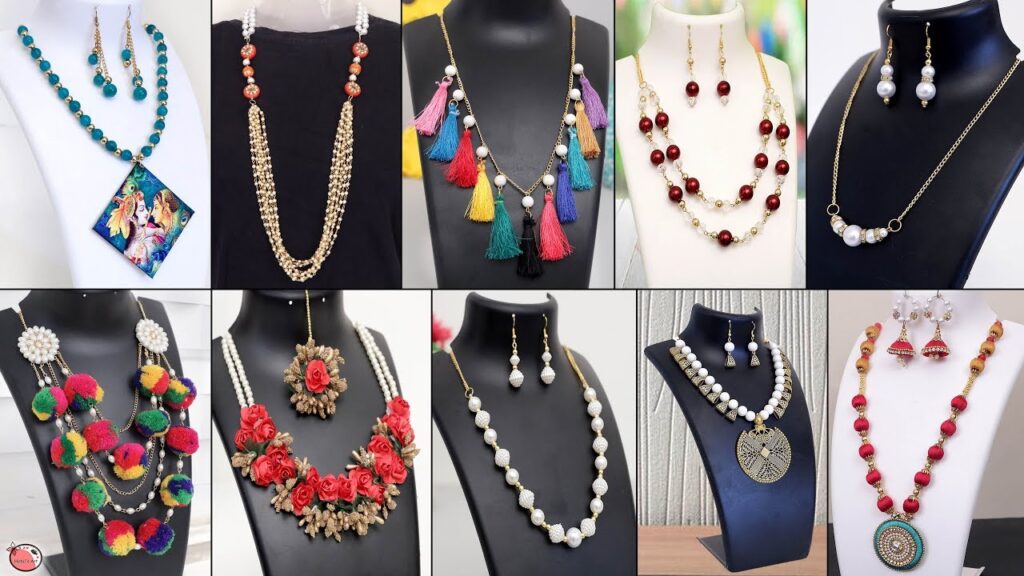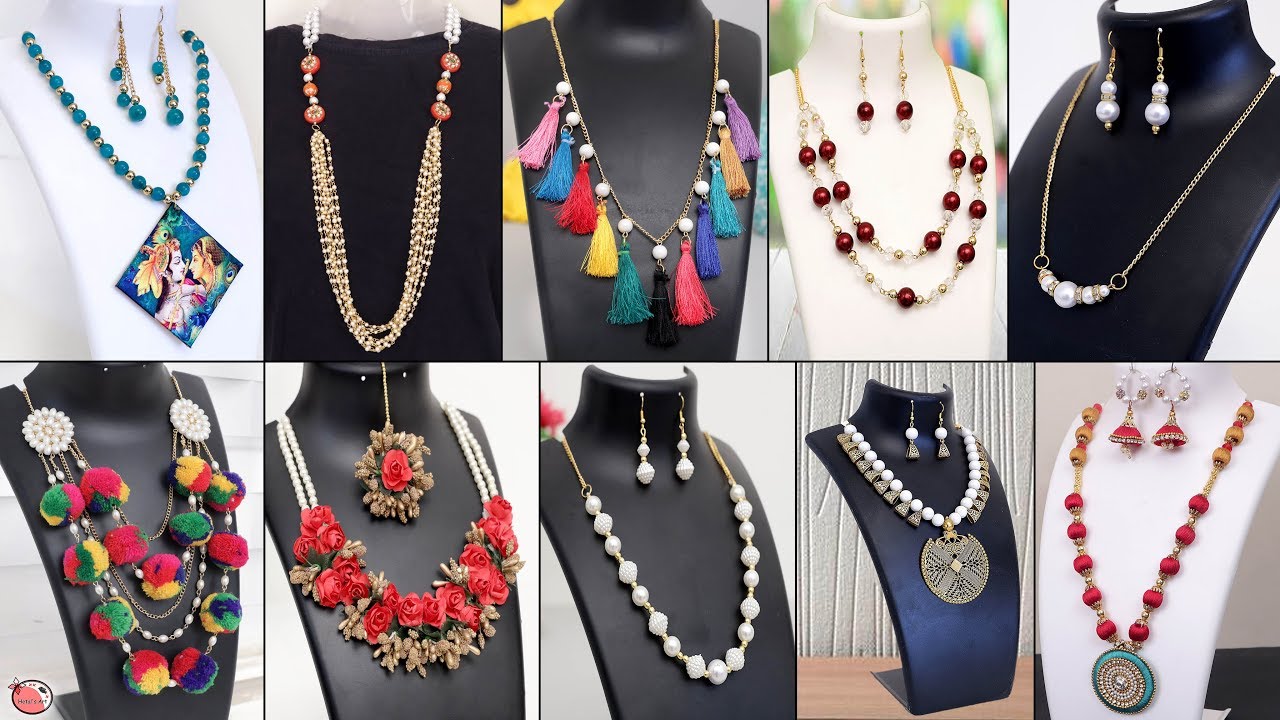
The Surprisingly Easy Way to Make a Coral Necklace: A Step-by-Step Guide
The allure of coral has captivated humanity for centuries. Its vibrant hues, ranging from delicate pinks to fiery reds, have made it a prized material for jewelry and adornment. While coral jewelry can often come with a hefty price tag, the good news is that creating your own coral necklace is surprisingly accessible and rewarding. This guide will walk you through the process, providing a clear and concise roadmap to crafting a beautiful and unique piece of jewelry. The surprisingly easy way to make a coral necklace is within your reach!
Gathering Your Supplies
Before you begin, you’ll need to gather the necessary materials. Fortunately, these are readily available at most craft stores or online retailers. Here’s a comprehensive list:
- Coral Beads: This is the star of the show! Choose the size, shape, and color of coral beads that appeal to you. Consider the overall design you envision. For a classic look, round beads are a great choice. Alternatively, experiment with other shapes like barrel, rice, or chip beads for added visual interest. Ensure you have enough beads to comfortably fit around your neck, allowing for some extra length for the clasp and any design elements.
- Beading Wire: This is the flexible wire that will string the beads together. Choose a beading wire that is strong, durable, and thin enough to pass easily through the holes of your coral beads. For most coral bead projects, a wire thickness of 0.015 to 0.019 inches is ideal.
- Clasp: This is the mechanism that will secure the necklace around your neck. There are various types of clasps to choose from, including lobster claw clasps, spring ring clasps, and magnetic clasps. Select a clasp that is easy to use and complements the style of your necklace.
- Crimping Beads: These small, metal beads are used to secure the clasp to the beading wire. They are crimped (flattened) with crimping pliers to create a secure hold.
- Crimping Pliers: These specialized pliers are essential for crimping the crimping beads. They have two notches that allow you to create a neat and secure crimp.
- Bead Stopper (Optional): A bead stopper is a small clamp that temporarily holds beads in place on the beading wire, preventing them from sliding off while you’re working.
- Wire Cutters: These are needed to cleanly cut the beading wire.
- Chain Nose Pliers: These pliers are helpful for manipulating the clasp and other small findings.
- Measuring Tape or Ruler: To measure the length of your necklace.
Once you’ve assembled your supplies, you’re ready to proceed with the creation of your coral necklace.
Measuring and Planning Your Design
Before you begin stringing the beads, take a moment to plan your design. This will help you visualize the finished product and ensure that you have enough beads. Consider the desired length of your coral necklace. A standard necklace length is around 18 inches, but you can adjust this to suit your personal preference. Use a measuring tape to determine the desired length. Keep in mind that the clasp will add a small amount of length.
Next, lay out your coral beads in the order you want them to appear on the necklace. This is a great opportunity to experiment with different color combinations and bead arrangements. You can create a uniform design with beads of the same size and color, or you can mix and match for a more unique look. Consider adding other beads, like metal spacers or gemstones, for added visual interest. Planning your design beforehand will streamline the stringing process and help you avoid any surprises later on.
Stringing the Beads
Now comes the fun part – stringing the beads! Here’s how to do it:
- Cut the Beading Wire: Cut a length of beading wire that is approximately 6-8 inches longer than your desired necklace length. This extra length will allow you to easily work with the wire and make the necessary adjustments.
- Attach the Clasp (One Side): Thread the beading wire through a crimping bead. Then, thread the wire through one loop of your clasp and back through the crimping bead. Pull the wire taut, leaving a small loop of wire near the clasp.
- Crimp the Crimping Bead: Use your crimping pliers to crimp the crimping bead. Place the bead in the crimping notch of the pliers and squeeze firmly. The crimp should be secure, but not so tight that it crushes the bead.
- String the Beads: Begin stringing your coral beads onto the beading wire, following the design you planned earlier. If you’re using a bead stopper, you can temporarily secure the beads on the wire as you go.
- Attach the Clasp (Other Side): Once you’ve strung all the beads, thread the beading wire through a crimping bead. Then, thread the wire through the other loop of the clasp and back through the crimping bead.
- Crimp the Crimping Bead (Other Side): Use your crimping pliers to crimp the crimping bead, securing the clasp.
- Trim the Excess Wire: Use your wire cutters to trim the excess wire, leaving a small amount of wire protruding from the crimped bead. This will help prevent the wire from unraveling.
With these steps, you will have successfully created your own coral necklace.
Finishing Touches and Troubleshooting
Once your coral necklace is strung, it’s time for some finishing touches. Inspect the necklace carefully to ensure that all the beads are secure and that the clasp is properly attached. Gently tug on the beads to check for any loose strands of wire. If you find any loose beads, you may need to re-crimp the crimping beads or add a dab of clear nail polish to the ends of the wire for added security. If you are using an elastic cord instead of wire, ensure it’s knotted securely.
If you’re not satisfied with the length of your necklace, you can easily adjust it by adding or removing beads. If you find that the clasp is difficult to open or close, you may want to try a different type of clasp or practice opening and closing it a few times to get the hang of it. If you find that the beading wire is kinking or fraying, you may need to use a different type of wire or adjust your technique.
With a little practice, you’ll be able to create a beautiful and durable coral necklace that you can wear with pride.
Caring for Your Coral Necklace
To ensure that your coral necklace lasts for years to come, it’s important to take proper care of it. Here are some tips:
- Avoid Exposure to Harsh Chemicals: Coral is a delicate material and can be damaged by harsh chemicals, such as those found in perfumes, hairspray, and cleaning products. Always remove your necklace before applying these products.
- Store Your Necklace Properly: When you’re not wearing your necklace, store it in a jewelry box or a soft pouch to protect it from scratches and dust.
- Clean Your Necklace Regularly: Gently clean your necklace with a soft cloth and mild soap and water. Avoid using abrasive cleaners or brushes, as these can damage the coral.
- Avoid Extreme Temperatures: Prolonged exposure to extreme temperatures can damage coral. Avoid leaving your necklace in direct sunlight or in a hot car.
By following these simple care tips, you can help your coral necklace retain its beauty and value for years to come.
Beyond the Basics: Customizing Your Coral Necklace
Once you’ve mastered the basics of making a coral necklace, you can explore a variety of creative possibilities. Here are some ideas to spark your imagination:
- Experiment with Different Bead Shapes and Sizes: Don’t be afraid to mix and match different shapes and sizes of coral beads. This will add visual interest and uniqueness to your necklace.
- Incorporate Other Beads: Consider adding other beads, such as gemstones, pearls, or metal beads, to your design. This can enhance the overall look and feel of your necklace.
- Create Layered Necklaces: Layering multiple necklaces of varying lengths is a popular trend. You can create a layered look by stringing different strands of coral beads or by combining coral with other types of necklaces.
- Add a Focal Point: Consider adding a pendant or a larger, more ornate bead as a focal point to your necklace. This will draw attention to the center of your design.
- Try Different Stringing Techniques: Experiment with different stringing techniques, such as using a knotting tool to create a more secure and professional-looking necklace.
The possibilities are endless! With a little creativity and experimentation, you can create a coral necklace that perfectly reflects your personal style.
Conclusion: The Joy of Crafting Your Own Coral Necklace
Making a coral necklace is a rewarding and accessible craft project. From gathering your supplies to stringing the beads and adding the finishing touches, the process is both enjoyable and fulfilling. The final result is a beautiful, handcrafted piece of jewelry that you can wear with pride or give as a thoughtful gift. The surprisingly easy way to make a coral necklace offers an opportunity to explore your creativity, learn a new skill, and create something truly unique. So, gather your supplies, follow the steps outlined in this guide, and embark on your own coral necklace-making adventure! You’ll be surprised at how easily you can create a stunning piece of jewelry that reflects your personal style and adds a touch of elegance to any outfit. Making your own coral necklace is a fun and fulfilling experience that anyone can enjoy.
[See also: How to Choose the Right Jewelry for Your Skin Tone, The History of Coral Jewelry, DIY Jewelry Cleaning Tips]


